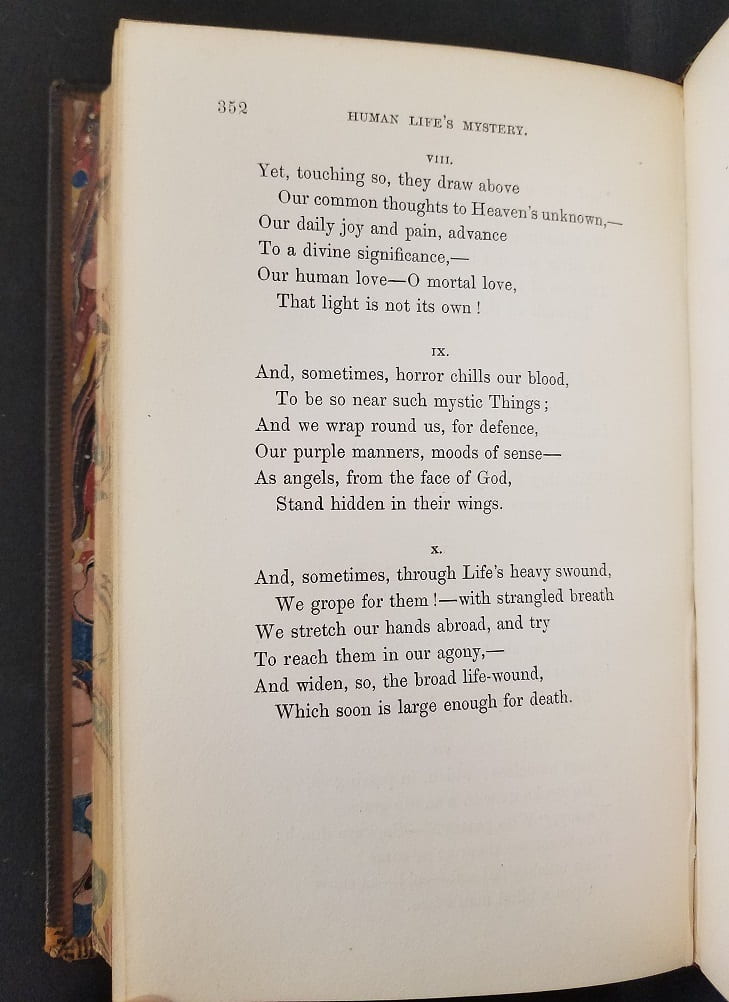I Never Got to Say Goodbye
Imagine you just lost someone who completed the other half of your heart. Now, picture that your mind is in a fog and nothing seems clear. Next, feel that every part of your body is aching in pain from the sadness that lies in your heart. You know that you will never hear from your loved one again, but all you want now is to hear from them once more. What if there were a way you could hear from your other half, one last time. Would you take that chance?
Elizabeth Barrett Browning lost her brother Edward after he drowned in a sailing accident in 1840. She loved her brother so much that it tore her apart physically and emotionally. She missed him; deep down she wished she could be in touch with him again. What if one day she were able to contact Edward? Is it truly possible to be in contact with the dead?
Elizabeth published a poem called “Human Life’s Mystery” in 1850, and it was about grief, but little did she know her curiosity in spiritualism possibly struck as she wrote the poem. Elizabeth became aware of spiritualism in 1851. Spiritualism is a religious practice and or a belief that is done by mediums, and they focus on communicating with people who have passed away in life (spirits of the dead). In the 1840s spiritualism became noticed in the United States, and in 1852 it became very popular with around 30,000 mediums claiming to have a shared connection to communicating with the dead. In 1853, Elizabeth kept hearing stories from all around about people speaking about spiritualism and being able to speak about the dead. She also read and was highly intrigued by a book by Henry Spicer called Sights and Sounds, which is about spiritualism and mediums. The poem, the gossip, and the book all lead her down a strong path in wanting to learn more about spiritualism. Could Elizabeth exploring spiritualism have consequences? Would it create issues with her beliefs?
Exhibit created by Jes’Marie Parker

Henry Spicer’s Sights and Sounds: The Mystery of the Day: Comprising an Entire History of the American "Spirit" Manifestations. [1853]. Book.
Henry Spicer, a spiritualist, wrote this book and published it in 1853. Spicer is collecting many stories and “evidence” about encounters with spirits of the dead from the U.S. & England. In the book, Spicer mentions a moment when he could hear tapping at the door of an old home but no one was there, and it turned out to be one of the spirits trying to communicate. Have you heard stories like this before?

Elizabeth Barrett Browning’s poem “Human Life's Mystery,” published in Poems, Vol.2. [1850]. Poem.
Elizabeth Barrett Browning published this poem in her book called Poems in 1850. Based on the title, “Humans Life’s Mystery” is not what you expect. It’s not about the wonders of human life. But this poem was written by Elizabeth with her feeling grief on the loss of her brother Edward. Consider stanza V, how might this relate to her brother? What questions might this raise about the unseen world?

Elizabeth Barrett Browning’s poem “Grief,” published in Poems, Vol.1. [1850]. Poem.
This is one of Elizabeth Barrett Browning’s poems called “Grief” from her Poems (1850). In this poem Elizabeth talks about how grief doesn’t consist of loud weeping. But that real grief and despair induce silence like a “monumental statue.” If the statue could weep, then it would arise like being alive. Consider the ending “arise and go,” could this imply a desire to leave this life behind and be with the dead?


Recent Comments